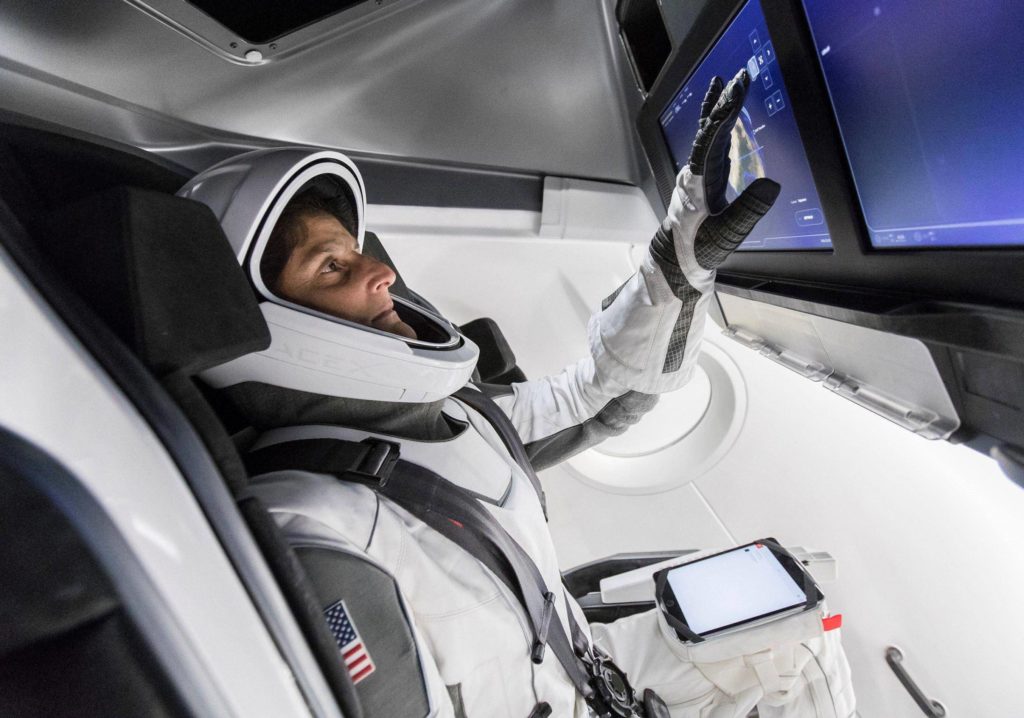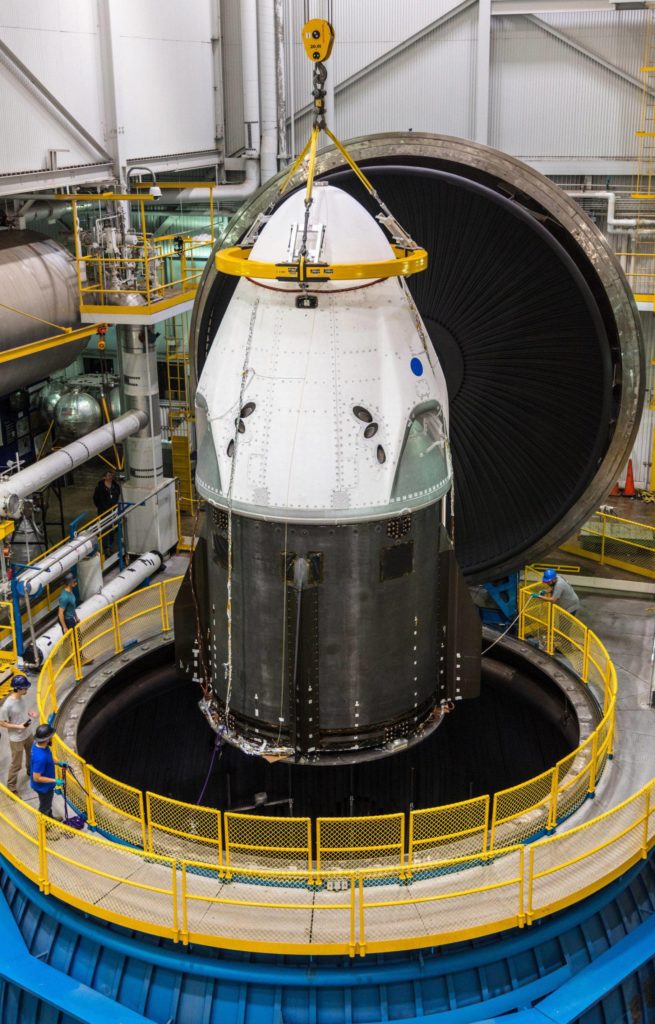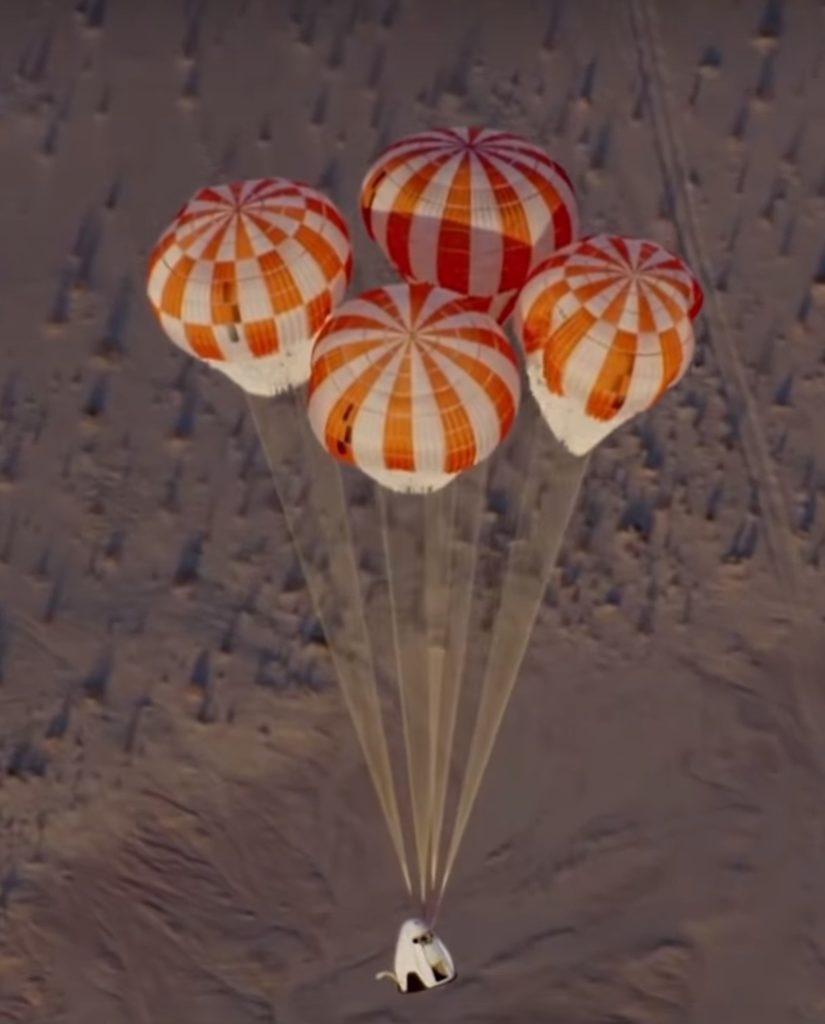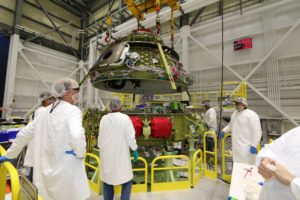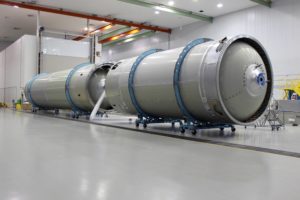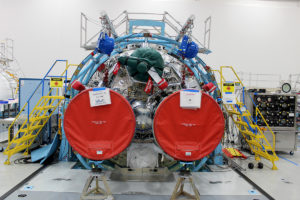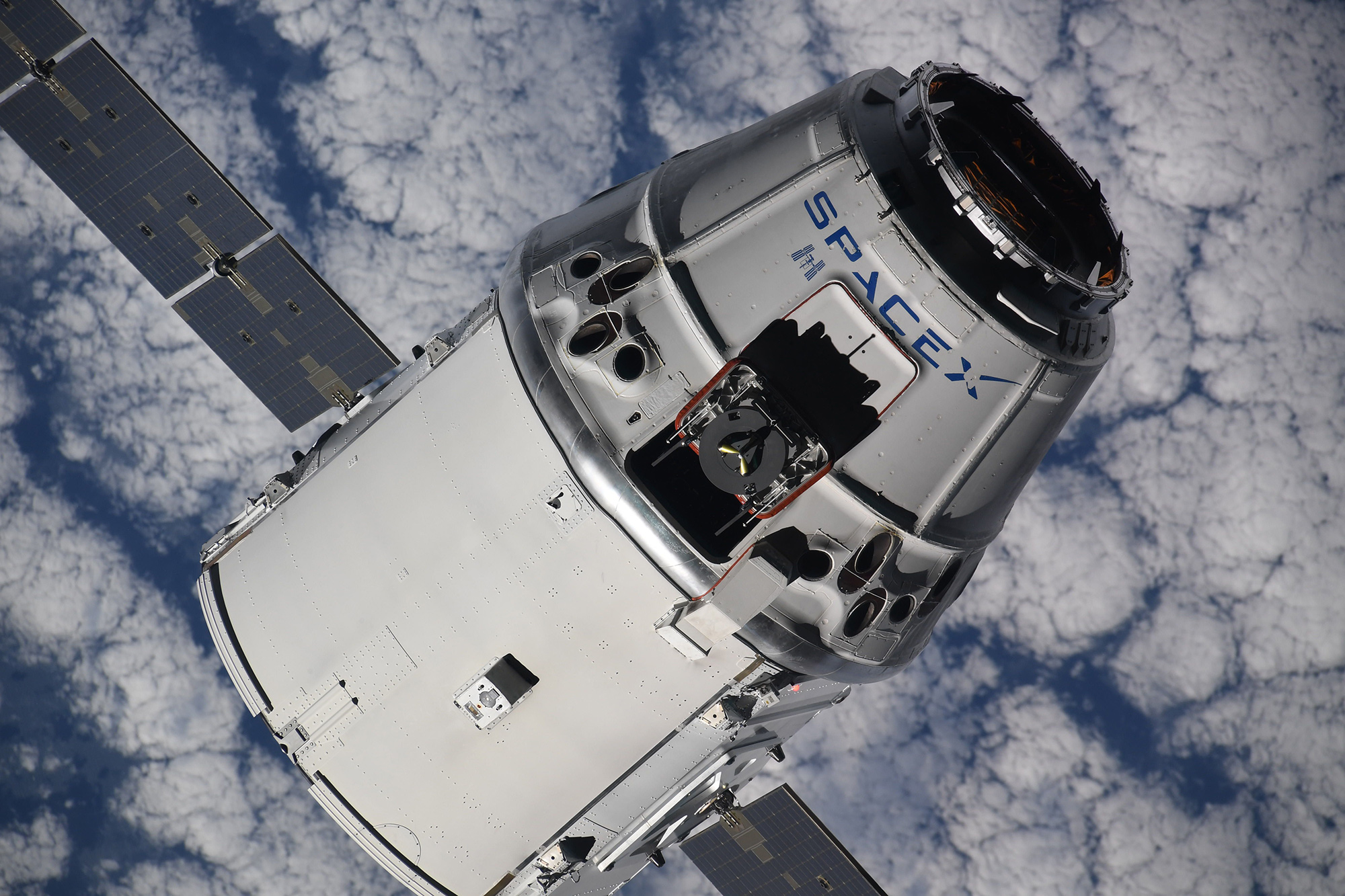
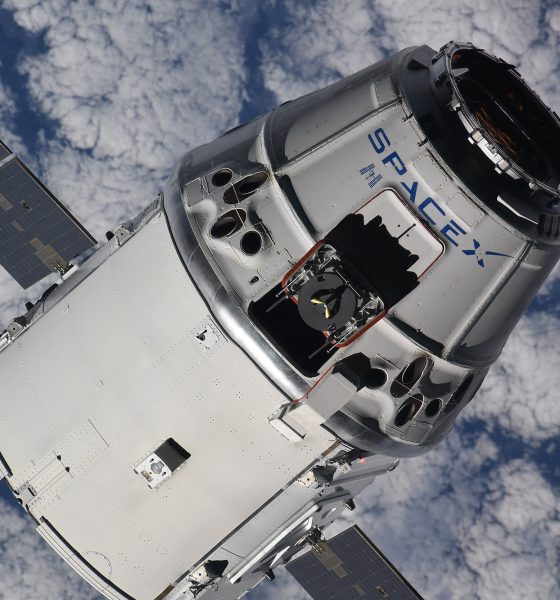
News
SpaceX’s Crew Dragon preps for debut as race to return astronauts to US craft nears final stages
After spending two weeks testing in a specialized NASA-run facility, SpaceX’s first flightworthy Crew Dragon spacecraft was shipped from Ohio to Florida, where it will now spend a number of months preparing for its first (uncrewed) launch into Earth orbit.
Known as Demonstration Mission 1 (DM-1), this critical milestone must be passed before the capsule will be certified to carry NASA astronauts to the International Space Station (ISS) sometime in 2019. While DM-1 will not sport a human crew, the spacecraft is nevertheless expected to demonstrate all life and mission-critical components, ranging from Crew Dragon’s complex array of avionics and ground/orbital communications equipment to craft’s ability to safely return passengers to Earth with a soft ocean landing.
SpaceX’s Crew Dragon spacecraft has been in the serious hardware development phase for approximately five years, although the concept itself dates back about as early as its Cargo Dragon predecessor – 2005 to 2006, publicly. Over the course of roughly two weeks of testing at NASA’s Plum Brook Station, Crew Dragon was likely subjected to a suite of environmental conditions the spacecraft will need to routinely survive to make it through initial launch and successfully operate under the rigors of microgravity and thermal vacuum conditions.
Crew Dragon arrived in Florida this week ahead of its first flight after completing thermal vacuum and acoustic testing at @NASA’s Plum Brook Station in Ohio. https://t.co/xXJE8TjcTr pic.twitter.com/lr0P95zzIK
— SpaceX (@SpaceX) July 12, 2018
Given the DM-1 capsule and trunk’s fairly quick jaunt at the huge Plum Brook vacuum chamber and equally quick arrival in Florida, those test results were likely quite favorable. Still, a major amount of work lies ahead before the first full Crew Dragon is ready for its launch atop Falcon 9. Most significantly, the craft’s trunk did not follow its fellow capsule to Florida, but rather returned to SpaceX’s Hawthorne, CA factory to be outfitted with critical flight hardware, particularly radiators and solar arrays. Once that outfit is complete, the module will also be shipped to Florida before being integrated with the DM-1 Crew Dragon capsule.
Of note, the DM-1 capsule has been constructed from the start to support a plan to use the vehicle in an in-flight abort test meant to ensure that the craft can wrest its passengers from harm’s way even at the most intense point of launch, where aerodynamic pressures are at their peak. In order to properly support both the DM-1 orbital mission and the in-flight abort test to follow, the capsule has been outfitted with a fair amount (hundreds of pounds) of hardware that will be unique to the pathfinder spacecraft. This understandably adds its own complexity to the already intense program’s first orbital mission, although it will hopefully not translate into additional delays.
- NASA Astronaut Suni Williams, fully suited in SpaceX’s spacesuit, interfaces with the display inside a mock-up of the Crew Dragon spacecraft in Hawthorne, California, during a testing exercise on April 3. (SpaceX)
- SpaceX’s Demo Mission-1 Crew Dragon seen preparing for vacuum tests at a NASA-run facility, June 2018. (SpaceX)
- Crew Dragon parachute tests are likely to continue into the summer to ensure NASA certification in time for DM-1. (SpaceX)
SpaceX competitor’s crewed spacecraft and rocket take shape
It’s worth noting that SpaceX is effectively operating at a distinct – albeit partially self-wrought – financial handicap when compared with Boeing’s Starliner spacecraft program, one of two vehicles funded by NASA to accomplish the same task of safely and reliably transporting astronauts to and from the ISS.
“NASA awarded firm-fixed-price contracts in 2014 to Boeing and Space Exploration Technologies Corporation (SpaceX) [of] up to $4.2 billion [for Boeing] and $2.6 billion [for SpaceX] for the development of crew transportation systems.” (GAO-18-476)
- Boeing’s DM-2 Starliner undergoes integration in Florida earlier this year. (Boeing)
- The ULA Atlas V rocket that will launch Boeing’s DM-1 Starliner spacecraft captured at ULA’s Decatur, AL factory, October 2017. (ULA)
- The United Launch Alliance (ULA) dual engine Centaur upper stage of the Atlas V rocket in the final stages of production and checkout, May 2018. (ULA)
In other words, Boeing requested and received a full 60% more than SpaceX to – quite literally – accomplish an identical task. Alongside the storied and brutally expensive history of crewed American spaceflight, both contracts are an absolute steal for two modernized, crew-capable spacecraft, but a 60% premium is a 60% premium. Foreseeable but slight cost overruns caused, among other things, by additional contractual requirements from NASA have followed a similar trend, roughly proportional to each company’s slice of the original $6.8b Commercial Crew contract.
“As of April 2018, NASA requirement changes had increased the value of contract line item 001 for Boeing by approximately $191 million and for SpaceX by approximately $91 million.” (GAO-18-476)
Still, Boeing’s progress towards its own DM-1 and DM-2 demo flights and a pad-abort test are impressive, although it very likely is more of a demonstration of a different approach to public communications than of any actual step up on SpaceX. In the last few weeks, Boeing has released a number of photos showing off the progress made building its own Starliner capsules and service modules (trunks), three of which are currently in varied states of assembly and integration in the company’s Florida-based facility. Additionally, United Launch Alliance CEO Tory Bruno has shared off-and-on updates and photos of the launch contractor’s own progress assembling the rockets that will launch Boeing’s spacecraft.
The two engine Centaur is getting ready and excited for #StarLiner. pic.twitter.com/WIf3H8k9yq
— Tory Bruno (@torybruno) July 2, 2018
Regardless, a huge amount of work lies ahead before both Boeing and SpaceX’s crewed spacecraft are able to conduct their first uncrewed and crewed launches into orbit. Now very outdated, NASA has stated several times recently that the presently available targets of NET August 31 will likely be updated later this month, pushing DM-1 debuts into NET Q4 2018 and the first commercial crewed demo missions to 2019.
Stay tuned, as the Block 5 Falcon 9 tasked with launching SpaceX’s own DM-1 Crew Dragon will likely be the next of a recent flood of finished rockets to leave the company’s Hawthorne factory, where it will head to McGregor, Texas to complete acceptance wet dress rehearsals and static fire tests before shipping to SpaceX’s Pad 39A in Florida.
Follow us for live updates, peeks behind the scenes, and photos from Teslarati’s East and West Coast photographers.
Teslarati – Instagram – Twitter
Tom Cross – Twitter
Pauline Acalin – Twitter
Eric Ralph – Twitter

News
Tesla FSD fleet is nearing 7 billion total miles, including 2.5 billion city miles
As can be seen on Tesla’s official FSD webpage, vehicles equipped with the system have now navigated over 6.99 billion miles.

Tesla’s Full Self-Driving (Supervised) fleet is closing in on almost 7 billion total miles driven, as per data posted by the company on its official FSD webpage.
These figures hint at the massive scale of data fueling Tesla’s rapid FSD improvements, which have been quite notable as of late.
FSD mileage milestones
As can be seen on Tesla’s official FSD webpage, vehicles equipped with the system have now navigated over 6.99 billion miles. Tesla owner and avid FSD tester Whole Mars Catalog also shared a screenshot indicating that from the nearly 7 billion miles traveled by the FSD fleet, more than 2.5 billion miles were driven inside cities.
City miles are particularly valuable for complex urban scenarios like unprotected turns, pedestrian interactions, and traffic lights. This is also the difference-maker for FSD, as only complex solutions, such as Waymo’s self-driving taxis, operate similarly on inner-city streets. And even then, incidents such as the San Francisco blackouts have proven challenging for sensor-rich vehicles like Waymos.
Tesla’s data edge
Tesla has a number of advantages in the autonomous vehicle sector, one of which is the size of its fleet and the number of vehicles training FSD on real-world roads. Tesla’s nearly 7 billion FSD miles then allow the company to roll out updates that make its vehicles behave like they are being driven by experienced drivers, even if they are operating on their own.
So notable are Tesla’s improvements to FSD that NVIDIA Director of Robotics Jim Fan, after experiencing FSD v14, noted that the system is the first AI that passes what he described as a “Physical Turing Test.”
“Despite knowing exactly how robot learning works, I still find it magical watching the steering wheel turn by itself. First it feels surreal, next it becomes routine. Then, like the smartphone, taking it away actively hurts. This is how humanity gets rewired and glued to god-like technologies,” Fan wrote in a post on X.
News
Tesla starts showing how FSD will change lives in Europe
Local officials tested the system on narrow country roads and were impressed by FSD’s smooth, human-like driving, with some calling the service a game-changer for everyday life in areas that are far from urban centers.

Tesla has launched Europe’s first public shuttle service using Full Self-Driving (Supervised) in the rural Eifelkreis Bitburg-Prüm region of Germany, demonstrating how the technology can restore independence and mobility for people who struggle with limited transport options.
Local officials tested the system on narrow country roads and were impressed by FSD’s smooth, human-like driving, with some calling the service a game-changer for everyday life in areas that are far from urban centers.
Officials see real impact on rural residents
Arzfeld Mayor Johannes Kuhl and District Administrator Andreas Kruppert personally tested the Tesla shuttle service. This allowed them to see just how well FSD navigated winding lanes and rural roads confidently. Kruppert said, “Autonomous driving sounds like science fiction to many, but we simply see here that it works totally well in rural regions too.” Kuhl, for his part, also noted that FSD “feels like a very experienced driver.”
The pilot complements the area’s “Citizen Bus” program, which provides on-demand rides for elderly residents who can no longer drive themselves. Tesla Europe shared a video of a demonstration of the service, highlighting how FSD gives people their freedom back, even in places where public transport is not as prevalent.
What the Ministry for Economic Affairs and Transport says
Rhineland-Palatinate’s Minister Daniela Schmitt supported the project, praising the collaboration that made this “first of its kind in Europe” possible. As per the ministry, the rural rollout for the service shows FSD’s potential beyond major cities, and it delivers tangible benefits like grocery runs, doctor visits, and social connections for isolated residents.
“Reliable and flexible mobility is especially vital in rural areas. With the launch of a shuttle service using self-driving vehicles (FSD supervised) by Tesla in the Eifelkreis Bitburg-Prüm, an innovative pilot project is now getting underway that complements local community bus services. It is the first project of its kind in Europe.
“The result is a real gain for rural mobility: greater accessibility, more flexibility and tangible benefits for everyday life. A strong signal for innovation, cooperation and future-oriented mobility beyond urban centers,” the ministry wrote in a LinkedIn post.
News
Tesla China quietly posts Robotaxi-related job listing
Tesla China is currently seeking a Low Voltage Electrical Engineer to work on circuit board design for the company’s autonomous vehicles.

Tesla has posted a new job listing in Shanghai explicitly tied to its Robotaxi program, fueling speculation that the company is preparing to launch its dedicated autonomous ride-hailing service in China.
As noted in the listing, Tesla China is currently seeking a Low Voltage Electrical Engineer to work on circuit board design for the company’s autonomous vehicles.
Robotaxi-specific role
The listing, which was shared on social media platform X by industry watcher @tslaming, suggested that Tesla China is looking to fill the role urgently. The job listing itself specifically mentions that the person hired for the role will be working on the Low Voltage Hardware team, which would design the circuit boards that would serve as the nervous system of the Robotaxi.
Key tasks for the role, as indicated in the job listing, include collaboration with PCB layout, firmware, mechanical, program management, and validation teams, among other responsibilities. The role is based in Shanghai.
China Robotaxi launch
China represents a massive potential market for robotaxis, with its dense urban centers and supportive policies in select cities. Tesla has limited permission to roll out FSD in the country, though despite this, its vehicles have been hailed as among the best in the market when it comes to autonomous features. So far, at least, it appears that China supports Tesla’s FSD and Robotaxi rollout.
This was hinted at in November, when Tesla brought the Cybercab to the 8th China International Import Expo (CIIE) in Shanghai, marking the first time that the autonomous two-seater was brought to the Asia-Pacific region. The vehicle, despite not having a release date in China, received a significant amount of interest among the event’s attendees.
